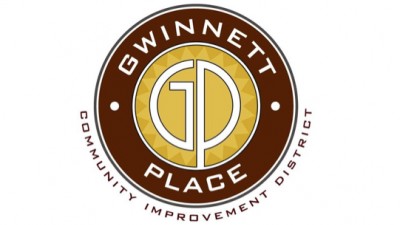Small But Mighty: Study Reveals Outsized Economic Impact Of Gwinnett Place Area

The Gwinnett Place area, a 2,000-acre region in suburban Atlanta, might have a zombie mall near its center, but the busy area immediately surrounding the mall is hardly a ghost town.
A recent economic impact study revealed the small region is an important contributor to Gwinnett County and the state of Georgia’s economies, even though most retail spaces at the old Gwinnett Place Mall are vacant. Joe Allen, executive director of the Gwinnett Place Community Improvement District, said that is because the area is home to many other thriving retail, office, hospitality and other businesses that serve the nearly 1 million people who call Gwinnett County home.
“In spite of the dead mall, the Gwinnett Place area continues to hit above its weight category because of the diversity of the businesses we have here,” Allen said. “We call ourselves the Gwinnett Central Business District, and I think the numbers back that up.”
The economic analysis found that the area, which amounts to less than 1% of the county’s land area, hosts more than 2,000 companies that employ nearly 29,000 people and contribute an estimated $7.5B to the local and state economies. In all, the Gwinnett Place area’s annual economic contribution to the state approaches $16B.
Food and general merchandise retailers in the GPCID sold $551M of taxable goods in 2022. Motor vehicle sales, which the analysis tabulated separately, amounted to an estimated $188M, or nearly a third of Gwinnett County’s vehicle sales.
The area also boasts the second-highest inventory of office square footage and office rental rates in the county, according to the analysis.
“Retail put this area on the map in the early 1980s, and we still have a little over 8M SF of retail here, but we've also got a sizable amount of office,” Allen said. “We've got 23% of Gwinnett County’s Class-A office space, in fact.”
The Gwinnett Place area is expected to generate even more tax revenue for government coffers once a revitalization strategy that proposes to convert the mall area into a mixed-use development begins to take shape in coming years. Allen said the GPCID’s economic contribution is projected to increase several times over once the Global Villages plan — which proposes as many as 3,800 new residential units, 50K SF of office space, 55K SF of new retail, a 50K SF cultural center and nearly 13 acres of parkland — becomes a reality.
Until then, Allen said one of his priorities is to make sure public and private investment continues to flow into the area to support infrastructure improvements and ensure the Gwinnett Place area’s economic engine doesn’t begin to sputter.
“If we want to keep this engine humming, and maybe even supercharge it, it's going to take investment by the county in infrastructure,” he said. “And more particularly, in public-private partnerships such as at the mall site and some of the other redevelopment sites here.”
The economic analysis performed by KB Advisory Group on behalf of the GPCID revealed numerous ways the area around the shuttered mall has a surprisingly robust economic impact. For every dollar it receives from the county, the Gwinnett Place area returns $1.79 in revenues to the county and $2.96 to county schools.
Not far from the old mall, more than 1.1M SF of new commercial real estate is in the development pipeline, including 1,126 new multifamily units and a 36-room hotel. The analysis projects the new developments will add $2.5B in market value to the county by 2033.
“If we can revitalize this area that is already giving more than its fair share of tax revenue with transportation and other infrastructure improvements, just think what that means to people elsewhere in the county,” Allen said. “That could take some of the property tax burden off of other Gwinnett County residents.”
Allen said he expects KB Advisory Group to finalize its analysis in the coming weeks and he looks forward to seeing more data on the mall revitalization strategy’s projected impacts. He said the final document will help make a strong case for continued Gwinnett County investment in the Gwinnett Place area.
“If we want this area to remain robust and grow its economic impact, we have a chance here to grow the pie through redevelopment,” Allen said. “I credit the county for being our partner on the revitalization strategy, but we really need to make reinvestment a priority. And what better place to invest than in the Gwinnett Place area, which has grown over the last three years to have a $15.9B economic impact?”
This article was produced in collaboration between Gwinnett Place Community Improvement District and Studio B. Bisnow news staff was not involved in the production of this content.
Studio B is Bisnow’s in-house content and design studio. To learn more about how Studio B can help your team, reach out to studio@bisnow.com.

